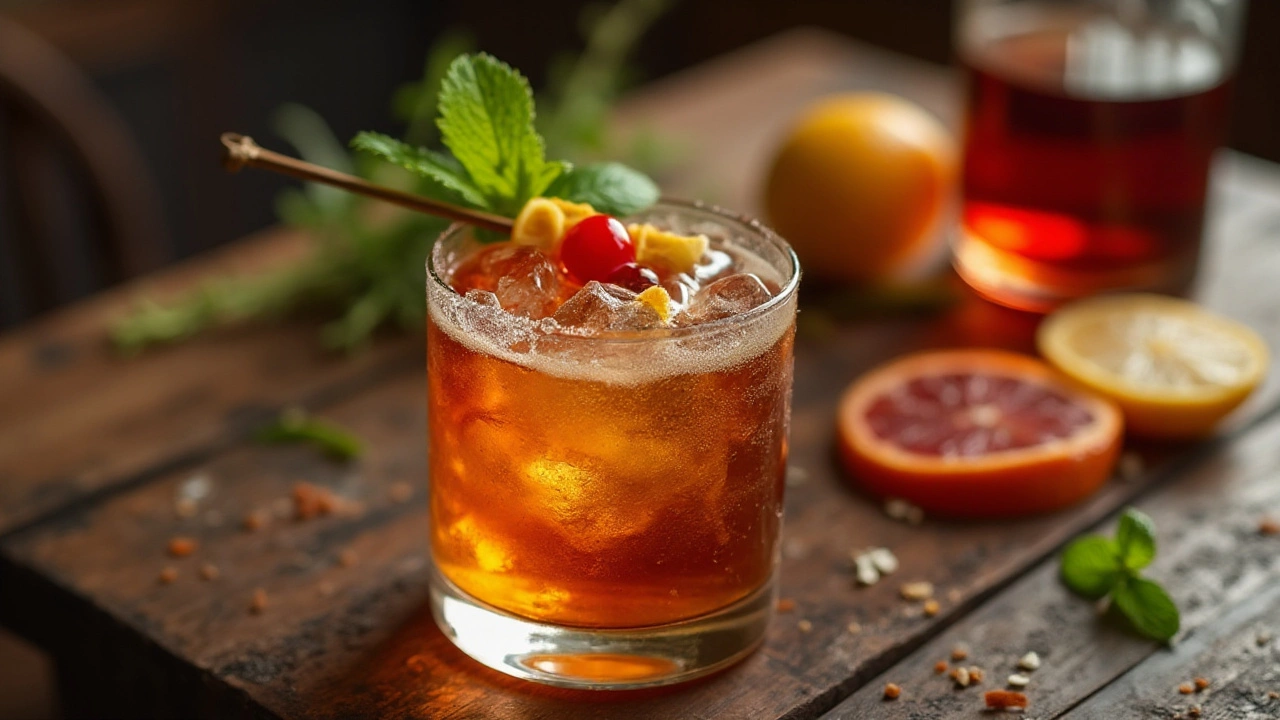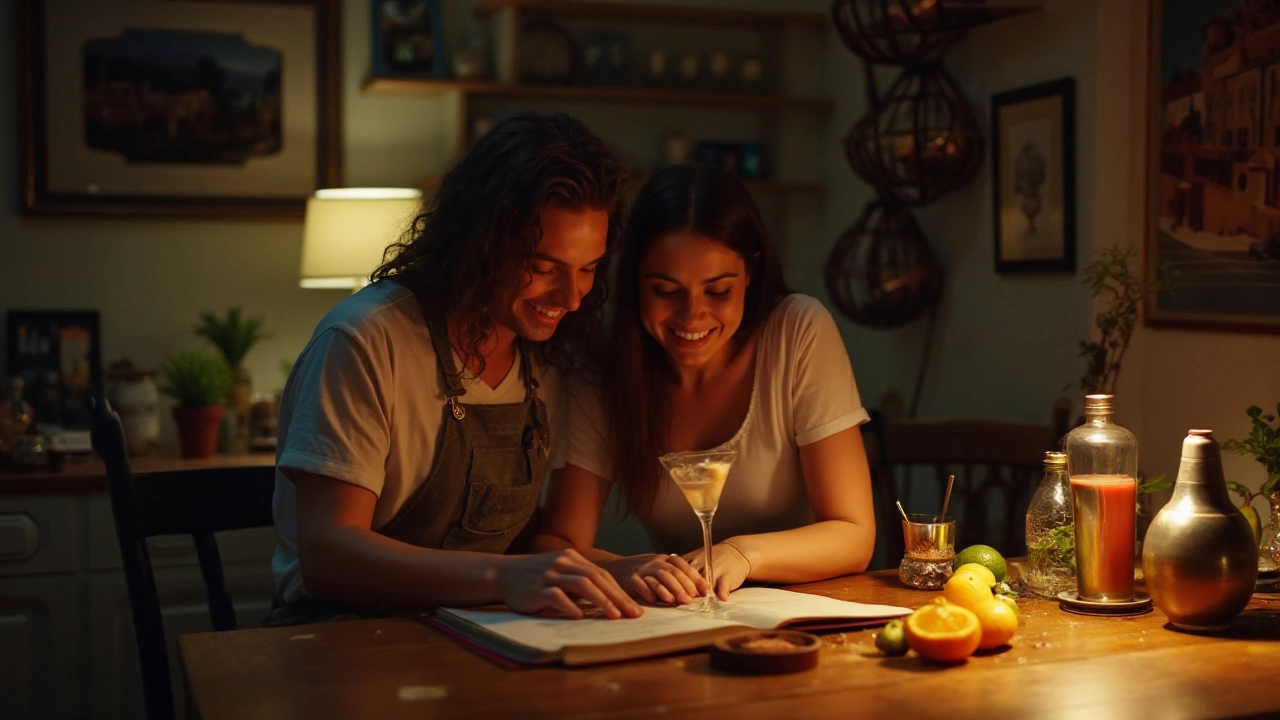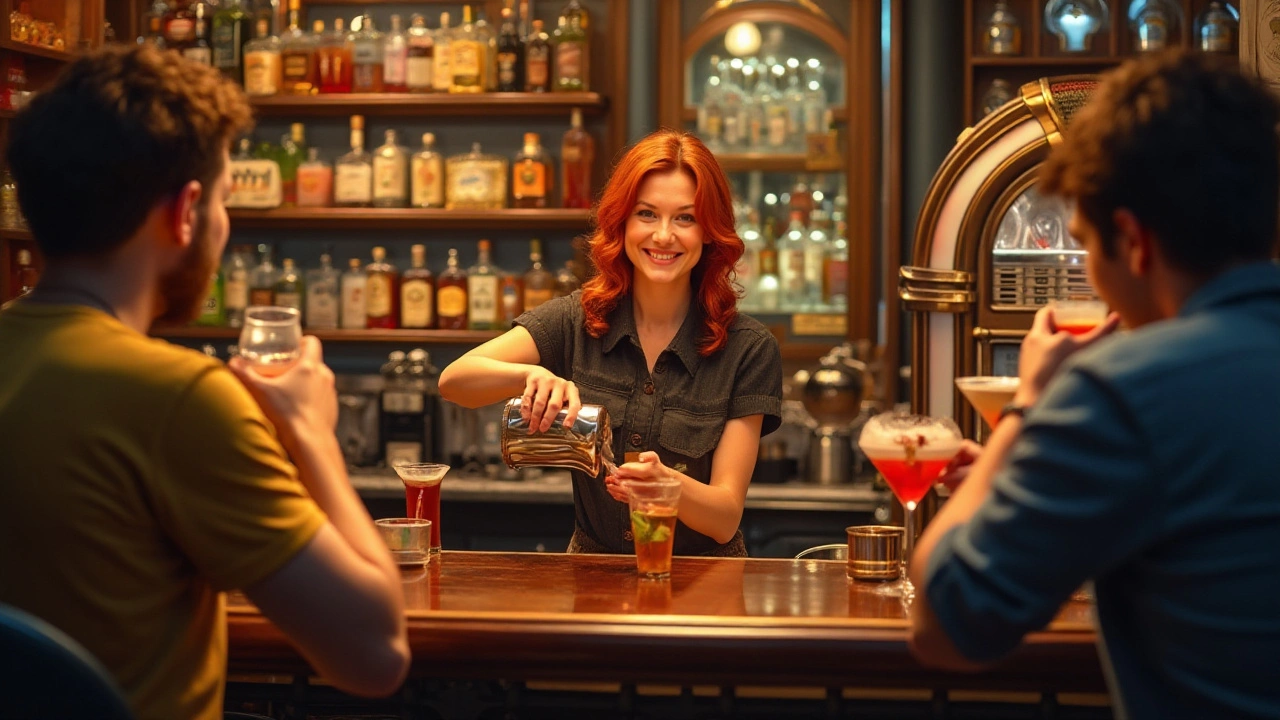In the world of mixology, few beverages embody the spirit of celebration and relaxation like a well-crafted cocktail. With its blend of cultural influence and imaginative flair, America's number one cocktail maintains a cherished place in bars and homes alike.
How does a drink rise to such popularity, and what makes it a quintessential part of American leisure? As you explore its roots, versatility, and charm, you may find a fresh appreciation for this vibrant libation. Whether you're looking to impress guests or enjoy a quiet moment of indulgence, diving into the art of cocktail making opens a gateway to creativity and enjoyment.
Join us as we uncover why this cocktail stands out from the rest, offering a tantalizing glimpse into the flavors and techniques that keep it at the forefront of drink menus across the nation.
- The Iconic Cocktail Revelation
- A Sip Through History
- Crafting the Perfect Blend
- Popular Variations to Try
The Iconic Cocktail Revelation
Among the vast sea of beverages that have washed across American shores, one cocktail has consistently stood out for its unique blend of history, flavor, and sheer popularity. The cocktail that holds the distinction of being America's most adored is the Old Fashioned. A drink that exudes simplicity and elegance, the Old Fashioned brings together the warmth of bourbon with the delicate sweetness of sugar, all rounded off with a dash of bitters and a hint of citrus from an orange peel garnish. Its harmony of taste elements makes it a timeless choice and a true reflection of American mixology's creative spirit.
Dating back to the early 19th century, the Old Fashioned first rose to prominence in Louisville, Kentucky, and quickly spread across the country as bartenders and patrons alike fell for its straightforward charm. Even in the year 2023, surveys confirmed its top spot among cocktail enthusiasts, beating out competitors like the Margerita and the Martini. But what keeps this drink in vogue over decades? Some say it's the drink's adaptability, able to sway between sweet and strong depending on the creator's choice of whiskey and mixers. Others cherish its ritualistic preparation, where each step serves as an homage to tradition and refinement.
What truly cemented the Old Fashioned's iconic status was its association with pop culture. It became famously popular in the mid-20th century, largely thanks to Madison Avenue's cultured symbol, Don Draper, from the TV series 'Mad Men.' His preference for the drink mirrored a larger shift in America as people sought to reconnect with the classics of yesteryears in an increasingly modern world. As one cocktail critic put it, "In times of uncertainty, the Old Fashioned is a reminder of simpler times when the evening began with the stir of a glass and ended in a deep, satisfying sigh."
Modern versions of the Old Fashioned continue to pay homage to its original ingredients, even as mixologists experiment with flavors like smoked whiskey or maple syrup. Yet, as the saying goes, the original is often the best. When served in its classic form, patrons can savor a taste of history in each sip, drawing a direct line from the past's artisanal traditions to today's nuanced palate. It's this marriage of past and present that keeps the Old Fashioned standing tall as America's number one cocktail, celebrated both for its time-honored roots and its ability to transcend them.
The art of making an Old Fashioned is akin to storytelling, weaving together layers of flavor and history. Each drink tells a different tale, influenced by the hand that crafts it." – John Doe, Renowned Bartender
For those looking to explore beyond the classic recipe, there are ample adaptations. Some enthusiasts enjoy the lighter, spicier notes introduced by rye whiskey, while others opt for a fruitier rendition by adding muddled cherries. Despite variations, the soul of the Old Fashioned remains unchanged: it is a cocktail about enjoying the honest balance of sweet and strong, about taking a slow and deliberate sip of craft and comfort.

A Sip Through History
The history of cocktails is an adventure, a journey through time that has seen these delightful concoctions evolve from simple mixes to intricate expressions of human creativity. The origins of the cocktail in America have often been linked to the early 19th century, a time when experimentation was rife due to the abundance of spirits and local ingredients. The term 'cocktail' first appeared in print in 1806, described in a New York newspaper as a potent mix of spirits, water, sugar, and bitters. This set a blueprint for many classic recipes that are still celebrated today.
The gold rush of the 1840s and the Civil War played significant roles in the dissemination of cocktails across the United States, with numerous influences pouring in from immigrants who brought their native flavors and drinking customs. The surge in saloons also meant that bartenders were continually striving to offer unique drinks, boosting the cocktail's profile tremendously. As urban centers grew, so did the social culture surrounding these spirited drinks, with signature recipes like the Old Fashioned and the Manhattan carving their niches in American bars. It was during the Prohibition Era from 1920 to 1933 that cocktail culture took a fascinating turn; speakeasies became the secretive cradles where bold spirits were clandestinely enjoyed, and mixers were innovatively used to mask the harshness of illicit alcohol.
The Modern Renaissance
In recent decades, the cocktail has experienced a remarkable renaissance. This resurgence is often credited to a renewed appreciation for craftsmanship and historical roots, with modern mixologists combining age-old techniques with contemporary twists. The craft cocktail movement of the early 21st century emphasized quality, sourcing fine spirits and fresh ingredients, and revived forgotten classics while crafting new ones. It's interesting to note that in a survey conducted by the Beverage Information Group, cocktail consumption has risen by nearly 40% from 2000 to 2020, aligning with this modern renaissance.
Today, whether it's blending a classic martini or experimenting with avant-garde flavors, the cocktail embodies a blend of heritage and innovation. As we sip through generations, it's hard not to appreciate the cocktail's rich tapestry of history – a true testament to its enduring appeal in American life. Perhaps this is best captured by renowned cocktail historian, David Wondrich, who once said, "A cocktail is more than just a drink; it's a portal to a different time and place."

Crafting the Perfect Blend
Creating the perfect cocktail is an art that combines precision, creativity, and a touch of intuition. The blend of flavors, the aroma, and visually appealing presentation all play pivotal roles in what makes a cocktail extraordinary. Step into any bar known for its craft mixology, and you will notice how detailed attention is given to each element, from the quality of ingredients to the type of glassware used. When it comes to America's favorite cocktail, balance is key. It requires just the right proportions and ingredients; too much or too little of one component can shift the taste dramatically. One might wonder how the perfect balance is achieved. The trick often lies in the harmony of bitter and sweet, the choice of spirits, and the freshness of supplementary ingredients like mint, citrus, or berries.
Let's delve into the process of mixing up this iconic drink. If you're aiming for a classic approach, start by selecting a premium quality spirit. The foundation of any good cocktail is its base liquor, which greatly impacts the final taste. Add ingredients that complement the base; for instance, a splash of triple sec or any sweet liqueur can enhance the flavors beautifully. A cocktail shaker will be your best friend when mixing these elements together, ensuring each sip offers a cohesive taste experience. Do not underestimate the power of garnishes. They don't just make a drink Instagram-worthy; they also contribute subtle hints of flavor. A twist of lemon, a few sprigs of fresh mint, or even a cherry on top can lift the drink to new heights.
Many mixologists emphasize the importance of ice in crafting cocktails, yet it is so easily overlooked by home bartenders. Ice doesn't just chill a drink; it also affects dilution and texture. Consider the size and quality of ice based on your cocktail. Large ice cubes or spheres melt slower, maintaining the drink's integrity and allowing you to savor every note. Utilizing different techniques to craft your drink can lead to interesting discoveries as well. Shaking instead of stirring, for example, aerates the cocktail, giving it a different texture and taste. As the renowned mixologist Dale DeGroff famously noted,
"Good cocktail is a philosophy of liberation."This quote captures the essence of experimenting with cocktails; it's about exploring possibilities and personalizing your drink until it feels just right.
If you're a data enthusiast, you might find it fascinating to know that, according to a survey by the American Cocktail Association, over 60% of drinkers appreciate cocktails with a balance of flavors - not too sweet and not too bitter. This statistic underlines the collective palate of cocktail lovers and why balance is so crucial. You might also notice that cocktails with a refreshing twist like mojitos and margaritas tend to dominate the top slots among favorite drinks in America, suggesting an affinity for light and citrusy notes. Regardless of your preferred style, perfecting your blend requires patience and practice. Remember, the joy of crafting a great drink is as much in the journey as it is in the final sip.

Popular Variations to Try
When it comes to cocktails, it's hard to resist the allure of trying something new, especially when variations of beloved drinks can elevate a typical evening into a memorable occasion. The beauty of America's most cherished cocktail lies in its adaptability, which has led to numerous inventive spins over the years. Each variant provides a unique take, reflecting regional tastes, seasonal ingredients, and personal flair. As part of their appeal, these variations often blend tradition with innovation, arousing curiosity in enthusiasts and inviting them to experiment with flavors. Whether it’s a twist on a classic or an entirely new creation, these inventive drinks can surprise and delight people looking to discover a new favorite.
A popular variation that continues to capture attention is the "Smoky Mezcal Margarita", an enticing blend of mezcal, lime juice, triple sec, and a touch of agave syrup. This smoky adaptation of the beloved cocktail introduces a robust, earthy flavor that pairs exquisitely with grilled fare or spicy dishes. What makes this version particularly intriguing is the incorporation of mezcal, a spirit known for its complex, smoky undertones, derived from the unique production process involving slow-roasting agave hearts. Such innovation illustrates how versatile the cocktail world can be, and how aromas and finishing touches, like a salted rim tinged with chili powder, can make a staple feel fresh and novel.
Another enchanting variant is the "Spicy Cucumber Jalapeño Mojito", which takes the refreshing qualities of a traditional mojito and adds a zesty twist. The drink combines muddled cucumbers and mint leaves, lime juice, sugar, rum, and a splash of soda, but the punch comes from fresh jalapeños that pack a feisty kick into every sip. This fresh new take is not only revitalizing on a hot summer’s day but also adds a remarkable contrast to lighter dishes such as fish tacos or ceviche. Serving this concoction over crushed ice and garnished with cucumber slices or mint leaves adds to the visual appeal and aromatic experience, making it a hit at social gatherings and intimate dinners alike.
The "Blood Orange Old Fashioned" offers a sophisticated twist that has become increasingly popular due to its unique blend of citrus and bitter notes. For this recipe, blood orange wedges, bourbon, bitters, and a dash of sugar work in harmony to create a drink that is both visually stunning and delectably flavorful. One cannot overlook the aesthetic presentation of this cocktail; its warm hues and bold zest enhance any soirée, leaving an impression both in taste and appearance. The rich complexity of bourbon serves as a robust backbone, balancing the citrus forward profile and ensuring that each sip is uniquely layered, elevating this variant to an esteemed status among aficionados.
"Innovation in cocktails leads to a delightful experimentation that can refresh our palates—and our ideas of classic flavors." — Jack Henry, Renowned Mixologist
Exploring such diverse adaptations can be like embarking on a delectable journey, where each recipe serves as a passport to new experiences. Varied ingredients and inspiration from global culinary traditions contribute richly to the tapestry of options available, enticing customers and bartenders alike to push boundaries. As cocktail enthusiasts discover these drinks and try their hand at recreating them, the embodiment of creativity and joy becomes an integral part of the social ritual. By diving into these refreshing takes on classic recipes, one can truly appreciate the impact of a carefully crafted cocktail on the fabric of American culture.


